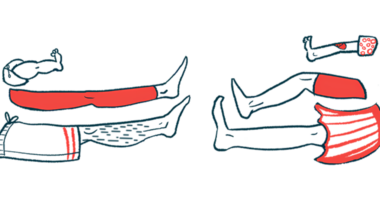Stem Cells, Turned Into Neurons, Restore Motor Function in Rats

Stem cells in the lab were turned into nerve cells (neurons) that can make dopamine — the chemical that is lacking in patients with Parkinson’s disease — and transferred into the brain of rats with a form of parkinsonism, where they worked to restore lost motor function, a study found.
With the findings in hand, researchers plan to move soon into a clinical trial in patients with Parkinson’s caused by mutations in PRKN, a gene that provides instructions for making a protein called parkin.
Such patients present the typical motor symptoms of idiopathic (unknown cause) Parkinson’s and do not experience nonmotor symptoms such as cognitive decline or dementia, making them ideal candidates for testing the stem cells.
The clinical trial is supported by a grant from the Michael J. Fox Foundation for Parkinson’s Research and will run at a number of locations, including the Barrow Neurological Institute in Phoenix. It will be coordinated by Jeffrey Kordower, PhD, the professor at Arizona State University who also led the study in rats.
If proven effective, the stem cells will be moved ahead into a larger clinical trial in a broader population of patients with Parkinson’s.
“We cannot be more excited by the opportunity to help individuals who suffer from this genetic form of Parkinson’s disease, but the lessons learned from this trial will also directly impact patients who suffer from sporadic, or non-genetic forms of this disease,” Kordower said in a university press release.
The study, “Optimizing maturity and dose of iPSC-derived dopamine progenitor cell therapy for Parkinson’s disease,” was published in the journal Nature Regenerative Medicine.
In patients with Parkinson’s, a shortage of dopamine-making neurons in a region of the brain called the substantia nigra causes symptoms that include tremor and difficulty walking and balancing.
Kordower’s team thought of using stem cells as a way to make up for the shortage in dopamine-making neurons. They used induced pluripotent stem cells (iPSCs), a type of cell that can develop into any other type of cell in the body.
It takes two main steps to make iPSCs. In the first step, adult blood cells are treated with a “cocktail” of reprogramming factors that cause them to revert to an embryoniclike state. In the second step, they are treated with additional factors that cause them to morph into the desired type of cell — the dopamine-making neurons.
In the study, the researchers found that if they waited only 17 days — rather than longer, 24 or 37 days — before introducing the second step, the neurons thrived better when transferred into the brain of rats. The researchers called them neuron “progenitors” because they had not yet fully matured in the lab.
They also innervated (supplied with nerve branches) over longer distances to other regions of the brain, including the striatum, as seen by generating more dopamine-producing nerve cell projections. Many of the dopamine-making neurons of a healthy substantia nigra project into the striatum.
“That’s important, because they’re going to have to grow long distances in the larger human brain, and we now know that these cells are capable of doing that,” said Kordower, who also directs the ASU-Banner Neurodegenerative Disease Research Center and is the Charlene and J. Orin Edson Distinguished Director at the Biodesign Institute.
To see how well the lab-made neurons worked to restore lost motor function, the researchers turned to a model of parkinsonism in rats. In the model, parkinsonism is induced in only one side of the body by injection of 6-hydroxydopamine — a compound that is toxic to dopamine-making neurons.
When stimulated with an amphetamine, rats will turn around in circles. The rats with parkinsonism rotated mostly in only one direction, indicating a loss in motor function. However, when injected with neuron progenitors, the rats rotated in both directions. This finding showed that the lab-made neurons were able to restore the lost motor function.
To understand whether more cells injected could mean better results, the team tested a wide dose range, from 7,500 to 450,000 cells per striatum. They found that higher doses resulted in better survival and innervation and provided faster and more complete functional recovery than lower doses.
“There was a clear dose response with regards to numbers of surviving neurons, innervation, and functional recovery,” the researchers wrote.
However, innervation was best correlated with functional recovery at lower doses.
“This suggests that a relatively small total number of cells might be required to be injected at a small number of locations in the striatum in each patient, which is favorable from a clinical safety standpoint,” the researchers wrote. “The early dose escalation studies in humans will inform future pivotal trials.”







